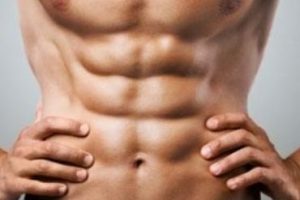As an ancient form of exercise and relaxation, yoga is one of the oldest and most effective ways to get in shape, relax and improve your health.
For over 4,000 years individuals have practiced yoga to enjoy a range of health benefits including lowering blood pressure, reducing stress, increasing muscle tone and boosting flexibility.
If you’re looking to explore the wide range of yoga variations out there, we’ve compiled a simple list you’ll want to explore.
Iyengar
With over 2,000 teachers worldwide, Iyengar is one of the world’s most popular yoga styles. It is also one of the best for beginners, as it has an intense focus on correct alignment in all of its postures. The classes move slowly and teachers work closely with you to ensure that your body enters into the various poses the proper way. If you’re looking for yoga practice that develops strength, mobility and stability, Iyengar is a great option to explore.
Bikram
Performed in rooms that are heated to around 105 degrees with approximately 40 percent humidity, Bikram classes challenge not only your flexibility but your ability to stay conscious for a full hour. In Bikram, the high heat and humidity work to loosen and relax muscles, allowing you to go deeper into various yoga poses. Be sure to take lots of water to a Bikram class and monitor your exertion closely as the class will burn plenty of calories and make you dehydrated if you don’t hydrate regularly.
Ashtanga
Meaning the eight limbs or branches of yoga, Ashtanga is a self-led practice that focuses on creating intense internal heat — as evidenced by the excessive sweat an Ashtanga workout produces. Founded by K. Pattabhi Jois in Mysore, India, this style of yoga has students execute a consecutive series of poses in rapid succession. There are six different series in the system that progress in difficulty as students improve.
Power
Power yoga was founded in the 1990s by Beryl Bender Birch in New York and Bryan Krest in Los Angeles. Both teachers had studied with Ashtanga master K. Pattabhi Jois in India. One major difference between Ashtanga and power yoga is that the American style doesn’t rely on an orderly progression of proscribed poses, so the classes can vary widely according to the teacher. For a freestyle of yoga, this one is a great option.
Yin
In Chinese philosophy, yin presents a more passive approach, while yang is more active. This style of yoga then, has its practitioners hold poses for long periods of time — sometimes five minutes or more — allowing gravity to pull them deeper and deeper into the stretch. Unlike other styles of yoga that stretch the muscles, Yin works on the connective tissue in the body.
Jivamukti
Another school of yoga that was started by students of K. Pattabhi Jois, this one was born in New York City in 1984 by David Life and Sharon Gannon. Jivamukti means “liberation while living” and it incorporates this philosophy into its classes beyond just the physical execution of poses.
Kundalini
The goal of Kundalini yoga is to get that snake to unwind and allow the energy to travel up the body, awakening each chakra, or energy center, as it goes. This is accomplished through yoga poses that differ greatly from those found in other yoga styles, joined with an intense focus on the breath.
Kripalu
Developed by Amrit Desai, Kripalu tends to be a more gentle form of yoga that’s good for beginners or anyone who is not at their physical peak. It teaches students to truly listen to their own bodies and engage in the level of practice that best suits them, with an emphasis on healing and meditation. If you’re looking for a slow and relaxing yoga practice Kripalu is for you.
When you are searching for the perfect yoga class, it’s important to try a few styles of yoga to see which is the best fit for you. While yoga might look the same, it’s subtly different and you should always ensure you ease your way into any yoga practice.
Namaste.




